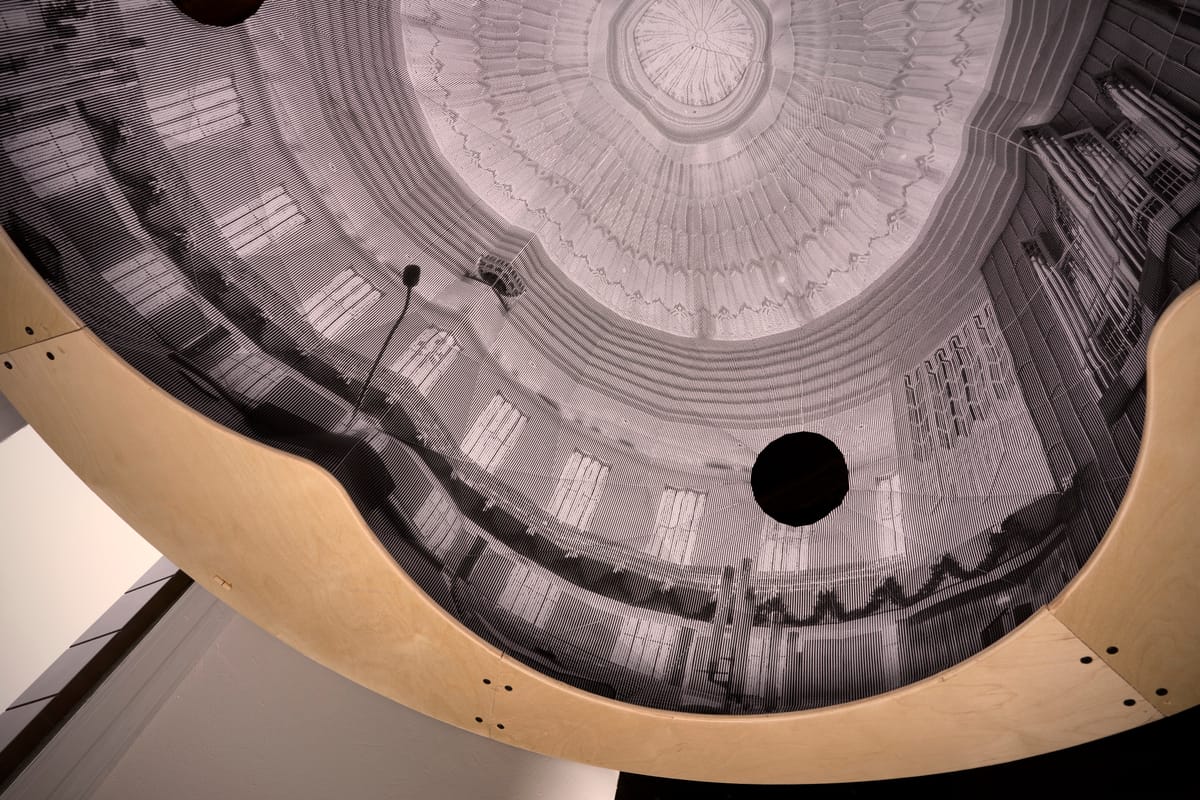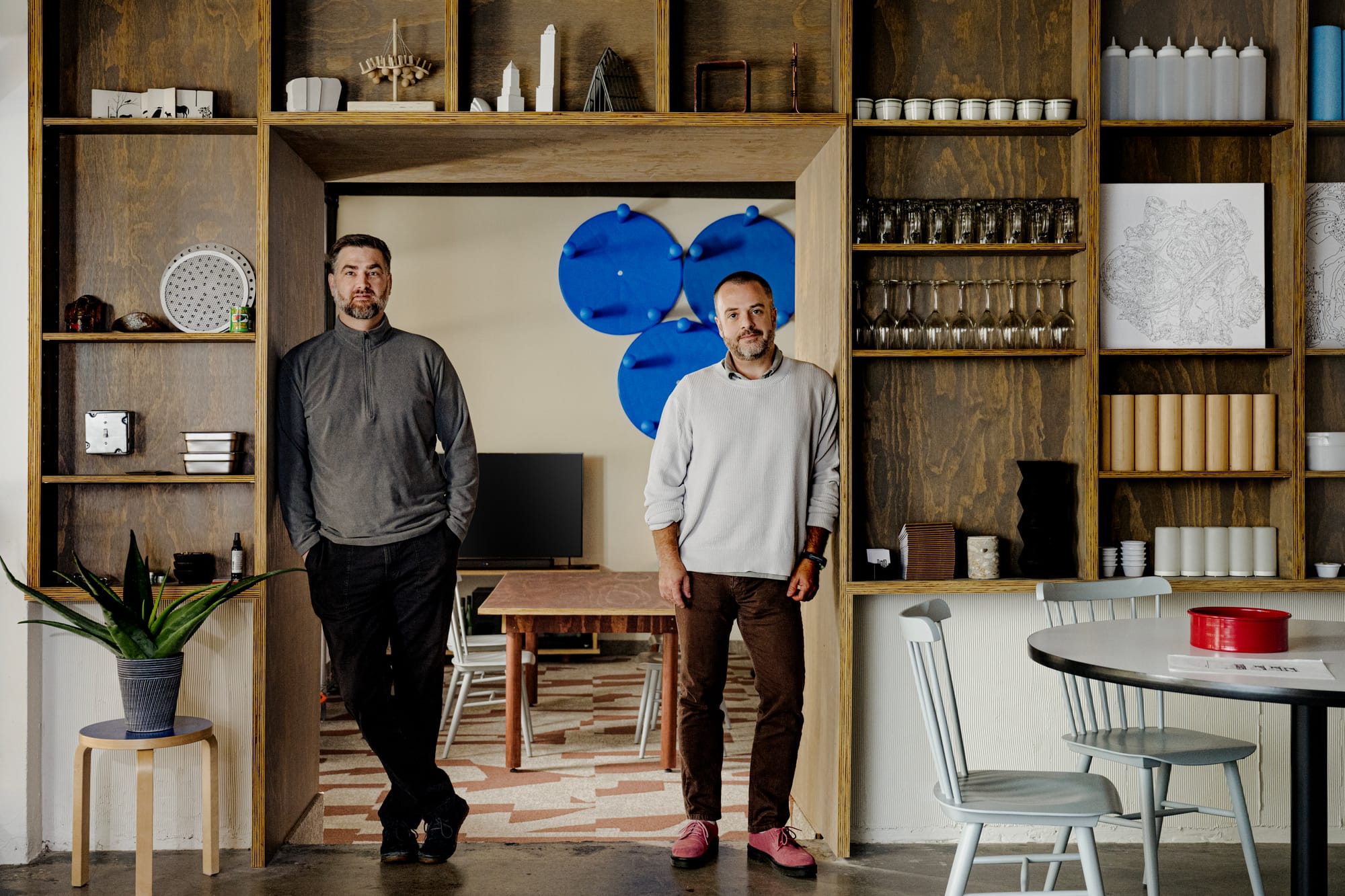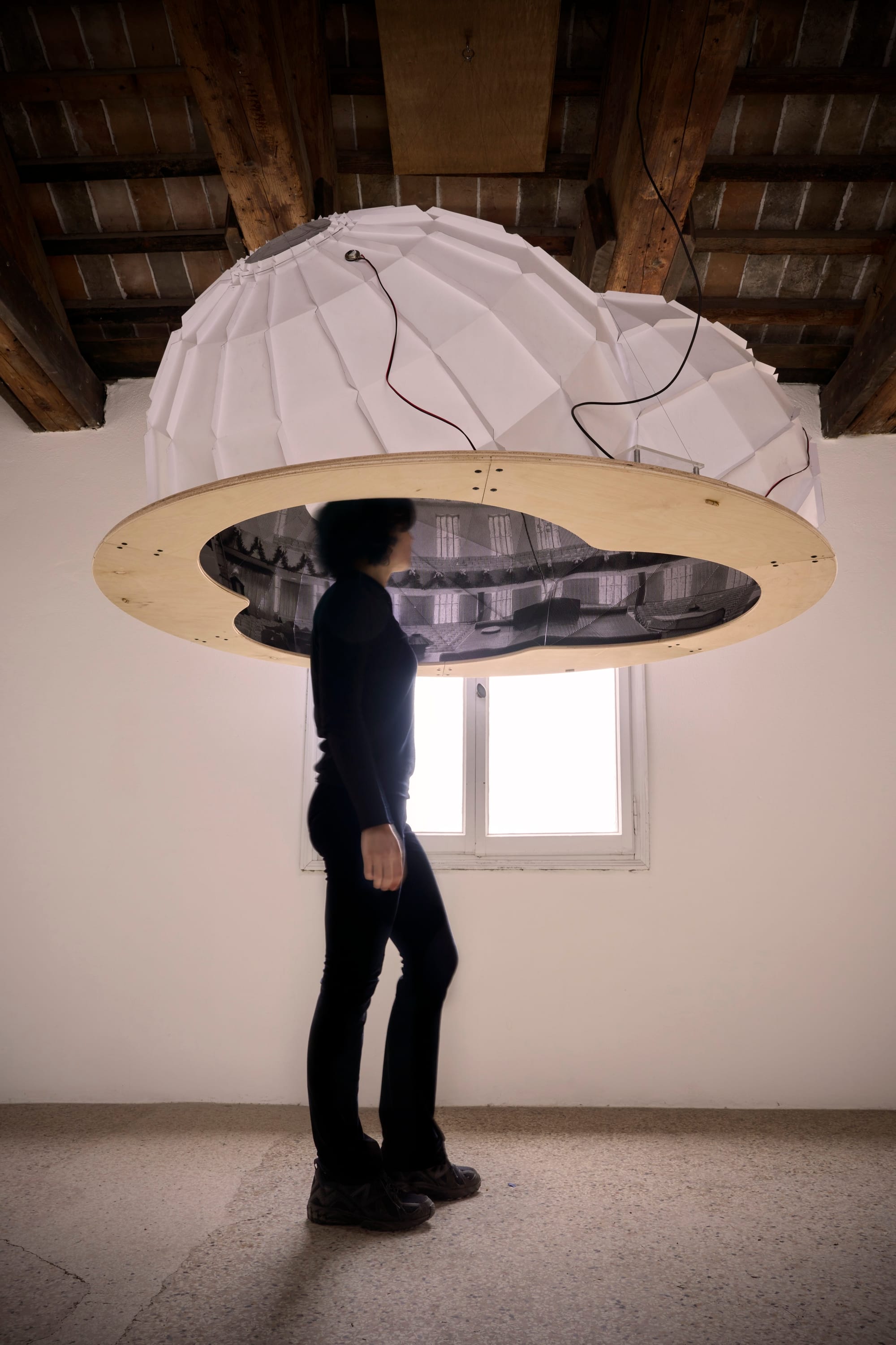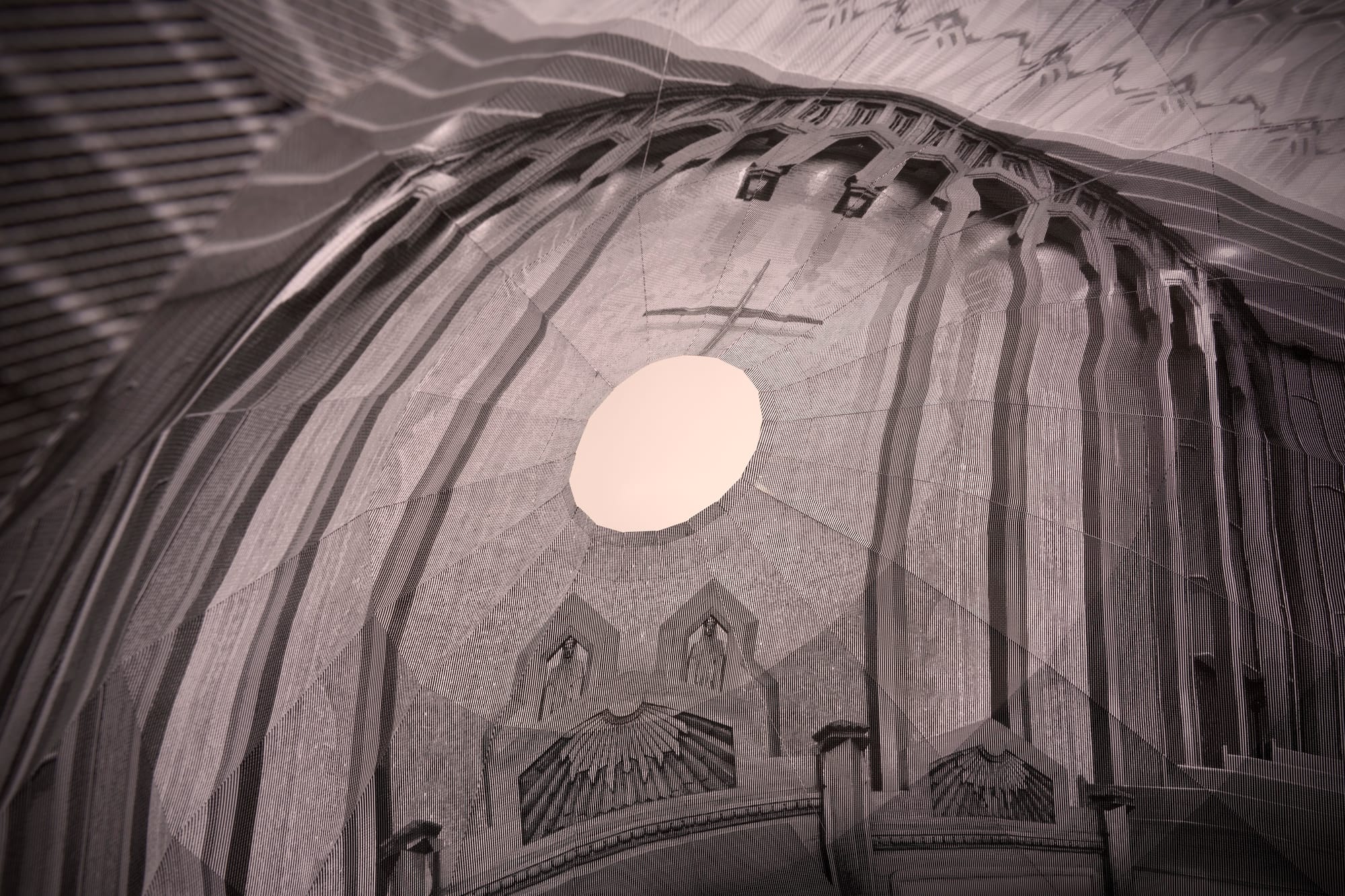
Imagine being able to experience one of Tulsa’s most significant examples of Art Deco architecture half a world away, in the Palazzo Mora in Venice, Italy … through an interactive suspended paper dome? Tulsa-based architecture studio Pfeifer Jones is doing exactly that; through an opportunity of creative cultural exchange, it is displaying its “project in a bag” at this year’s Venice Architecture Biennale.
By graphically mapping the interior of Tulsa’s Boston Avenue Methodist Church onto the inside surfaces of a suspended paper dome, the “Organ Drone Dome” becomes an intimate performance venue that makes for a striking interactive art and architectural experience. This iconic Tulsa edifice was designed by Bruce Goff and Adah Robinson and was completed in 1929, and designated as a National Historic Landmark in 1999.
Bret Pfeifer and Aaron Jones are the duo behind Pfeifer Jones, and they co-own what they refer to as an “experimental architecture studio” based in the downtown Deco District. Initially meeting back in college while studying architecture at Oklahoma State University, both moved outside the state to follow their career paths but found their way back to Tulsa about three years ago.
After living and working in New York City since graduating, Pfeifer decided to move closer to home after having a daughter in 2010, and began working for Selser Schaefer Architects (now Narrate Design). “Maybe three years ago, I got a call from Aaron, but we’ve been keeping in touch and working together on various creative projects over the years. He called me thinking the same thing—that it might be time to move and be closer to home. He was calling to check the market and see who might be looking for some talent here, so I immediately got excited and we kind of just formed our studio from there.”


LEFT: Bret Pfeifer and Aaron Jones, Photograph by Tony Li. RIGHT: Photograph by Clelia Cadamuro
Their current project has its roots at a different state university. “We recently had been part of the Outré West exhibition at the Oklahoma Contemporary Arts Center in Oklahoma City, showcasing that school of thought that originated here with OU,” says Pfeifer. “One of the architects being Herb Greene, another was Bruce Goff. That Bruce Goff connection was at the forefront of our mind, so as we were looking at these cathedrals here, we immediately just saw Boston Avenue with the Goff connection. We got permission from the church to photograph their main sanctuary space to use as this creative project, sort of as the backdrop. Then from there, started thinking about, ‘Okay, well, what could be a musical component to this that has Tulsa roots?’ So we linked up with a sound artist named Dave Broome, who we had worked with previously on another creative project; he’s Tulsa-based and has deep roots here, so it just made sense having him come on board. He composed a little two-minute looping track of a drone organ sound that he manipulated to where the end of that two-minute loop sort of starts to disintegrate sonically, and does this weird audio left, right, kind of dance track that gives it a very cool effect.”
“We’re taking Tulsa, Oklahoma, our region, to Venice and celebrating that.” –Bret Pfeifer
Entitled “Organ Drone,” the score draws linkages between the stretched interior graphics and a series of elongated organ notes or “drones.” The interior dome surfaces or “intrados” are mirrored, mapped and “groined” into a three-chambered environment through low-poly modeling, graphic manipulation and experimental printing techniques. By incorporating the musical scores within these historical interiors, it is meant to stoke a deeper and more critical engagement of both elements.
Jones’ background was in this cross between the music world and the architectural design world. By building on established working relationships with a group that had exhibited previously at the Venice Biennale, Pfeifer Jones received an invitation to be a part of the exhibition this year—it was the perfect opportunity to showcase a local expression of their performance art installations on an international level.

“We wanted to kind of make it a regional or specific type of piece, and so we began thinking about where we’re based and how to incorporate it into the piece,” says Pfeifer. “So in a way, it is us now bringing our experiences from previous work to life back home—like the inverse of that. We’re taking Tulsa, Oklahoma, our region, to Venice and celebrating that.”
Of course, traveling internationally with your “project in a bag” could hardly go without a few hang-ups. Jones recaps the day they landed: “Arriving in Italy Saturday morning around 10:30 a.m., but our project bag got delayed. So we spent most of the day with Air France baggage support trying to figure out what’s going on. We also didn’t have some of our personal items, but were able to get them on Sunday to begin setting up as scheduled on Monday.”
This quick trip overseas during spring break allowed time for them to come back and continue projects locally, as well as spread the word about the piece of Tulsa that will be on view—to make sure it is on the summer vacation itinerary for those who are planning to attend the Biennale in Venice, or may want to now add that to their list of must-see exhibitions.
For those interested in architecture, art or merely the power Oklahoma natives have to continue to shape the cultural landscape at large, Pfeifer Jones is a blueprint example of how a seasoned creative practice of pursuing culturally significant project types, scales and sites has now provided a well-deserved international presence. See it in person during the Time-Space-Existence exhibition on display at the Palazzo Mora in Venice, Italy, from May 10 to Nov. 23.
Follow the studio at @pfeiferjones, and online at pfeiferjones.com, and learn more about the 2025 Venice Architecture Biennale at europeanculturalcentre.eu/allevents/exhibitions.

